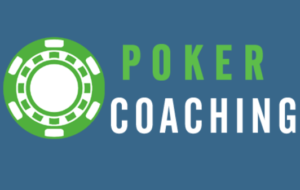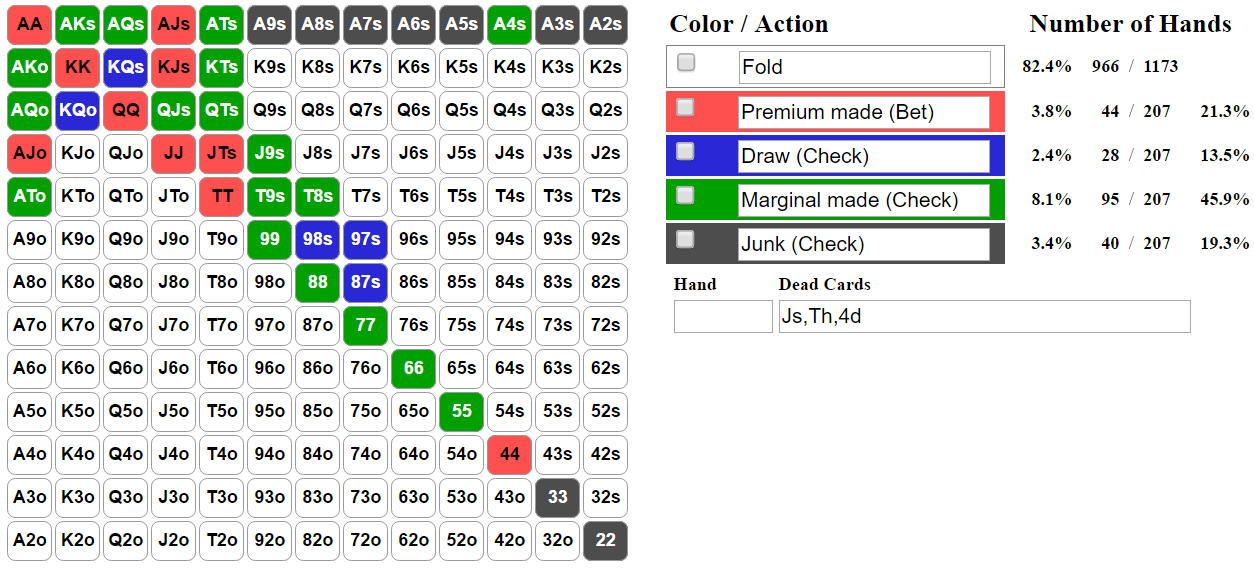 In my previous two blog posts, we discussed how to exploit Calling Stations and Weak Players. Today, we will discuss combating Maniacs.
In my previous two blog posts, we discussed how to exploit Calling Stations and Weak Players. Today, we will discuss combating Maniacs.
We will classify a maniac as someone who will apply pressure whenever given the opportunity. It should be obvious, but the way you beat maniacs is by rarely folding your decently strong hands. This should lead you play your strong hands in a manner that makes it nearly impossible for you to have to fold. One of the biggest leaks amateurs have is they will call a flop check-raise from a maniac, call the turn, and then fold on the river, believing that the maniac simply must have a strong hand to fire all three streets. This is exactly what maniacs want because they win a free flop and turn bet. To make things even worse, many amateurs 3-bet the flop with their best hands, capping their flop bet-calling range at top pair, at best. When a maniac applies significant aggression, the last thing you want to do is apply additional pressure and let him off the hook.
Like most types of players, maniacs come in a few varieties. The first will only apply pressure when you show weakness. These players actually do quite well because when the average player checks in the small stakes games, it is usually with the intention of folding if someone bets. You combat these players by simply treating them like strong players, although if you check behind with a marginal made hand on the flop (as I suggest you do) you should be more inclined to call them down when facing a turn and river bet. This is because this type of maniac will view your flop check behind as weak and will attack. Unless the board runs out incredibly scary, you should buckle up and call down.
For example, when in the same situation as my previous two articles where you raised from middle position, the big blind (this time a maniac) calls, and the flop comes Js-Th-4d, against this player I would use this strategy on the flop:
When I check behind, even if the turn is quite scary, such as an overcard, I would still tend to call with most of my flop checking back range besides only 7-7, 6-6, and 5-5. Unless the river is another overcard, I would call again with the entire range besides 9-9, 8-8, and A-4. This essentially has me calling down with all middle pairs and better, which is a large portion of my made hand range.
Be careful that you do not mistake a strong player for a maniac. Many of the best players in the small stakes attack weakness when they assume it actually indicates weakness. If your incorrectly-assessed strong opponent catches onto the fact that you plan to call down with all marginal made hands, he will adjust and value bet more intelligently versus you, causing your junky middle pairs to become significant losers.
The second type of maniac will apply pressure in somewhat common spots, like check-raising the flop, as well as when you show weakness. Most of these players assume that their opponents will continuation bet too often (which is usually the case). They learned that if they raise or check-raise the flop, they steal the pot a large portion of the time. Against these players you should again use the same range as above because when you bet and get raised, you can withstand significant pressure with your premium made hands and draws. Again, your plan should be to call down quite liberally.
The third type of maniac will relentlessly apply aggression whenever given the opportunity. Many of these players have a bad case of Fancy Play Syndrome and will attempt huge bluffs whenever they think they will succeed. These players are some of the biggest losers in the game and for that reason, they don’t last too long. If your opponent will mindlessly apply aggression, you should only bet with hands that withstand significant pressure:
The problem with this tight, blatantly straightforward strategy of only betting with your nut hands is that even the most maniacal players will eventually catch on. This should lead you to adjust back to betting with your draws as well. Against some wild players, hands such as K-T (middle pair) may become strong enough to include in your premium hand range, especially if you think your opponent will check-raise the flop with legitimately any two cards.
I want to make it perfectly clear that if you continuation bet on J-T-4with a premium hand, such as 4-4, A-A, or K-J, or a marginal made hand such as J-9 or K-T, and a blatant maniac check-raises, you are in call down mode. Do not 3-bet to “find out where you are” or to “protect your hand”. You profit versus maniacs by giving them every opportunity to bluff. If he happens to have you beat, he is getting paid off. That is part of the game that you must accept.
When playing versus overly aggressive players who are willing to put large amounts of money in the pot with junky hands, you are going to experience big swings to your bankroll. In somewhat maniacal online games, it is not uncommon to swing 500 big blinds or more each session. This would be like winning or losing $1,000 at $1/$2 each session. If you are not comfortable with this, poker may not be for you. That said, keep in mind that most maniacs don’t last long and are quickly relegated to the rail.
Maniacs give amateur players a lot of trouble because they fail to properly assess their tendencies. Some “maniacs” will apply relentless aggression versus some players but play normally versus others. You have to figure out how the maniac perceives you. If he thinks you will fold lots of hands to flop aggression but if you stick around, you have a strong hand, you can expect the maniac’s turn and river betting ranges to be quite strong. If he thinks you are a typical amateur who caps his range by not 3-betting the flop and will eventually fold by the river, expect his range to be wide. Always keep in mind what your range and image looks like to your opponent. Failing to take this into consideration leads to the demise of many small stakes players.
 If you enjoyed this blog post, you will love my interactive poker training site, PokerCoaching.com. There you can test yourself with over 100 interactive quizzes and study the game with me with monthly homework questions and review webinars. If you want to take your game to the next level, PokerCoaching.com is for you.
If you enjoyed this blog post, you will love my interactive poker training site, PokerCoaching.com. There you can test yourself with over 100 interactive quizzes and study the game with me with monthly homework questions and review webinars. If you want to take your game to the next level, PokerCoaching.com is for you.
If you missed any of this series or if you want to share these blog posts with your friends, here are the links:
Be sure to check back next week for another educational blog post. Thanks for reading!


